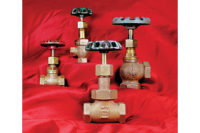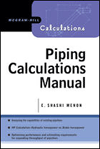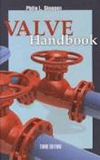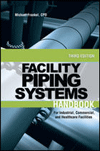These projections are part of the forecast issued by the Business Survey Committee of the Institute for Supply Management (ISM). The forecast was released Dec. 12.
“Manufacturing purchasing and supply executives are optimistic about their organizations’ prospects for the first half of 2007, and predict additional growth during the second half,” said Norbert Ore, chair of the ISM Manufacturing Business Survey Committee. “While 2006 was a good year overall, it presented challenges with regard to energy costs and overall inflation in manufacturing costs. Respondents now expect those pressures to subside in 2007 based on their overall price forecast.”
Manufacturing lost momentum in the last several months of 2006, with a decline in new orders and production in November ending 41 consecutive months of growth, as measured by the monthly Manufacturing ISM Report On Business®.
Summary Of Manufacturing Outlook
Manufacturing
Summarizing revenues for 2006, 66% of respondents said revenue was better than 2005, and that their nominal (before adjusting for inflation) revenues increased an average of 12.4% over 2005. Conversely, 19% said their nominal revenues decreased in 2006 by an average of 10.5%. The remaining 15% indicated no change.Purchasing and supply executives forecasted an overall net nominal increase of 6.2% in business revenues for 2006 over 2005. This is lower than the 6.6% increase that was forecast in April 2006 for all of 2006, and higher than the 5.4% increase predicted in December 2005 for all of 2006.
Purchasers forecasted that 2007 will be better than 2006. The 72% of respondents forecasting better business in 2007 than in 2006 estimated an average nominal (before adjusting for inflation) increase of 10.7% in their organizations’ revenues. This is in contrast to an average nominal decrease of 12.7% forecast by the 11% who predict worse business in 2007. Including the 17% who see no change in 2007, the forecast for overall net nominal growth in business revenues for 2007 over 2006 is 6.4%.
Manufacturers reported operating at 84.5% of their normal capacity, down from 85.6% reported in April 2006. Purchasing and supply executives predicted that capital expenditures will increase by 8.5% in 2007, compared to a 7.3% increase reported for 2006.
Survey respondents also said that they will reduce inventories in an effort to decrease their purchased inventory-to-sales ratio in 2007. Manufacturing purchasers are predicting growth in exports and imports. They also expect the U.S. dollar to strengthen against the currencies of major trading partners.
The panel predicted the prices they pay will increase 1.4% during the first four months of 2007, and will decrease 0.3% for the balance of 2007, with an overall increase of 1.1% for 2007. Respondents’ major concerns are: inflation; energy cost and supply; healthcare costs; China - currency and imports; and labor and benefits costs.
A special question was asked to determine the progress of organizations in achieving efficiencies from the application of technology to supply management. Respondents believe they are only 50% complete on average in achieving benefits from technology in their supply chain, indicating there is still significant improvement to be gained from the application of technology in manufacturing.
Survey respondents expect to realize supply chain improvements through new or improved enterprise technology; improved supplier management practices; improved inventory management; increased low-cost country sourcing; and application of lean manufacturing concepts.
Capital Investment
Purchasing and supply managers report 2006 capital expenditures rose 7.3% when compared to 2005 levels. The 45% of purchasers who reported increased capital expenditures in 2006 indicated an average increase of 25.4%, while the 13% who said their capital spending was reduced reported an average decrease of 31%. Forty-two percent said they spent the same in 2006 as in 2005.Purchasing and supply executives expect capital expenditures to rise 8.5% in 2007.
Prices
After an initial forecast in April 2006 of a 4.2% increase in prices paid, survey respondents now report realized price increases averaging 5.5% for the year. The 79% who say their prices are higher now than at the end of 2005 report an average increase of 7.5%, while the 10% who report lower prices averaged a 4.2% decrease. The remaining 11% indicate no change between the end of 2005 and the end of 2006.Forty-nine percent of purchasing and supply managers expect the prices they pay to increase in the first part of 2007 by an average of 5.2%. At the same time, 21% anticipate decreases averaging 5.6%. Including the 30% who expect no change in prices in the first four months of 2007, purchasers expect the net average overall price change to increase 1.4% for the period.
The forecast says respondents predict a net average increase of 1.1% between December 2006 and December 2007, indicating they expect price increases to moderate during the period of April 2007 through December 2007 at a rate of -0.3%. Fifty-five percent of respondents expect an average price increase of 5.2%, while 26% expect an average decline of 6.9%. The remaining 19% expect no change in their average prices paid for the year.
Exports & Imports
The responses for this semiannual report indicate purchasers are optimistic about new export orders for the first half of 2007. This is consistent with the most recent ISM New Export Orders Index data in the monthly Manufacturing ISM Report On Business®, which has shown a significant rate of growth in new export orders.Of the 81% of respondents who export, 54% predict an increase (45% moderate and 9% substantial) over the next half-year. Only 3% of respondents predict a decrease in their exports, and 43% anticipate no change in exports over the next half-year.
Purchasers expect continued growth in imports in the first half of 2007. Of the 89% of purchasers who reported they import, 46% predict an increase in their imports over the next half-year (34% moderate and 12% substantial), while 10% predict a decrease in imports of materials (9% moderate and 1% substantial). Almost half of survey respondents (44%) expect no change in imports.
Profit Margins
Survey respondents report that profit margins stayed the same on average during the second and third quarters of 2006, as 36% experienced an increase in profit margins, an almost equal number (35%) had lower margins and 29% reported no change. However, expectations are for improvement between now and April of 2007 as 43% predict better profit margins, 23% predict lower profit margins and 34% predict no change.Looking Ahead
Looking ahead to the first half of 2007, survey respondents are optimistic about the next half year. Comparing their outlook for the first half of 2007 to the last half of 2006, 41% predict it will be better, 24% predict it will be worse and 35% expect no change.Purchasing and supply executives are more optimistic about the second half of 2007 compared to the first half of the year. The percentage of survey respondents who forecast the second half of 2007 to be better than the first half is 48%, while 10% expect it to be worse and 42% expect no change.
Manufacturing purchasers will be decreasing inventory on hand to support their planned level of sales during 2007. In this forecast, 16% expect to increase their purchased inventory-to-sales ratio during 2007. This is in contrast to 27% who expect the ratio to decrease and 57% who predict no change.







